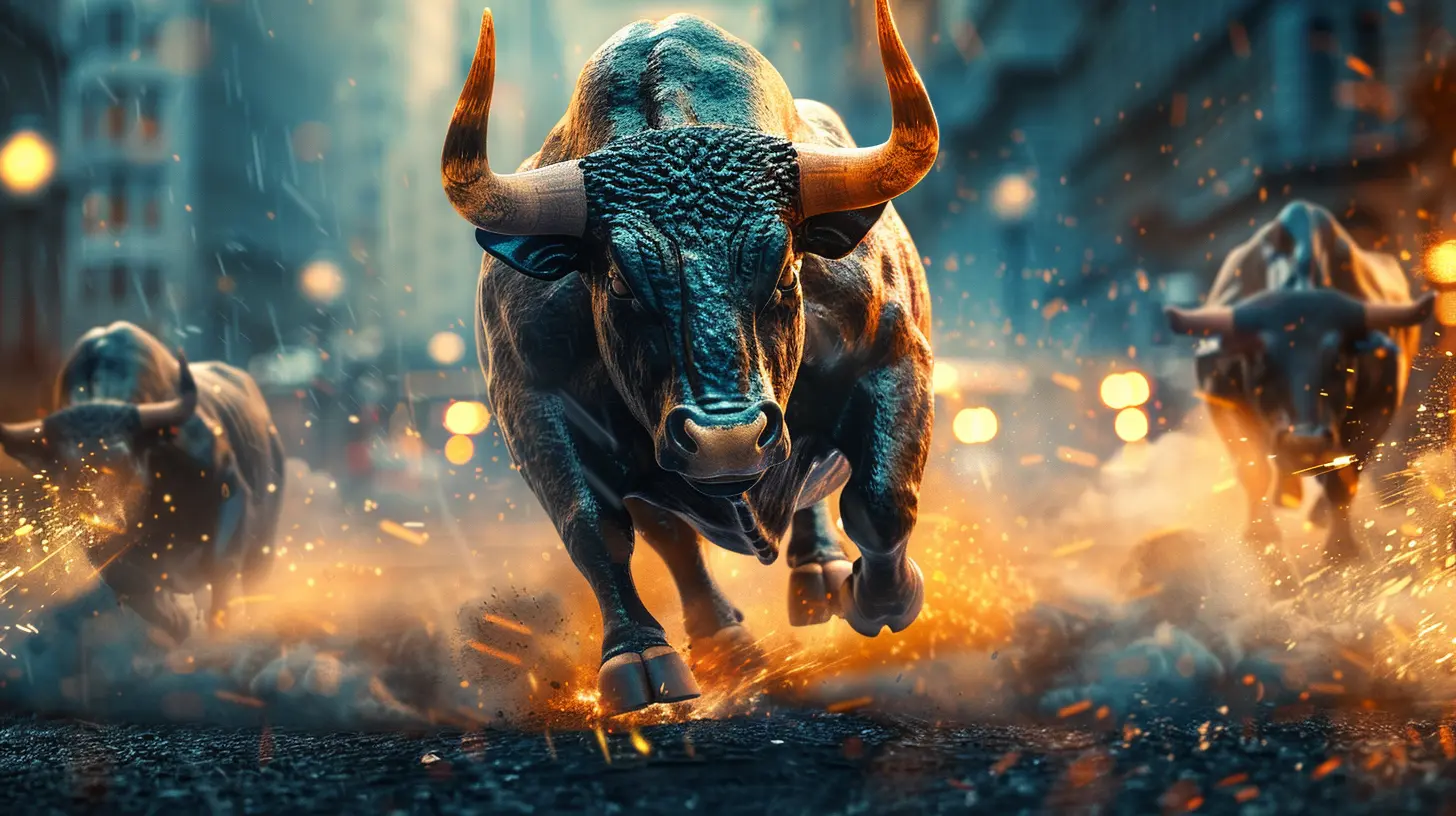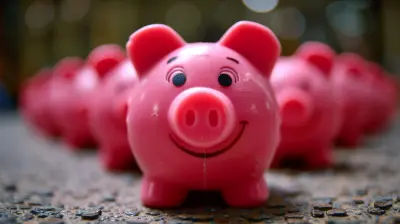Stock Market Crashes: How to Be Ready Before the Market Tanks
12 November 2025
Let’s be real—no one likes watching their portfolio take a nosedive. Stock market crashes are scary. Whether you're a seasoned investor or just dipping your toes into the financial pool, a sudden market downturn can feel like your wealth is vanishing into thin air.
But here's the thing: crashes are part of the investing game.
They’re like plot twists in a movie—you know they’re coming, you just don’t know when. The good news? You can be ready for them. You don't need a crystal ball or a fancy finance degree to prepare yourself. All you need is some solid knowledge, a good mindset, and a game plan.
So, let’s talk about how you can brace yourself before the market tanks—and maybe even come out stronger on the other side.
📉 What Exactly Is a Stock Market Crash?
Before we dive into how to prepare, let’s make sure we’re on the same page.A stock market crash is when the market (like the S&P 500 or Dow Jones) suddenly drops dramatically in a short period—think 10% or more in a matter of days. It’s usually caused by panic-selling, uncertainty, economic issues, or some ugly combination of all three.
Think of it like a sudden thunderstorm—it comes quickly, pours like crazy, and leaves everyone scrambling for cover.
Now, don’t confuse a crash with a correction (which is a slower, more mild downturn). A crash feels like the floor just disappeared under your feet. And let’s be honest, panic is the worst financial advisor out there.
🧠 Mindset Matters: Keep Calm and Think Long-Term
Let’s start with your brain—because your emotions can be your worst enemy during a crash.When markets tumble, our instincts scream “SELL EVERYTHING!” But acting on fear can lock in losses that could’ve been avoided if we’d just taken a deep breath. Seasoned investors understand that market crashes are temporary. Historically, the markets have always recovered—and often come back stronger.
Here’s a comforting stat: If you had invested in the S&P 500 during any 20-year period in history, you’d have made money. That’s right. Every. Single. Time.
So what’s the takeaway? Don’t panic. Don't make impulsive decisions. Think long-term.
🏗️ Build a Strong Financial Foundation First
Before you jump into any fancy investing strategies, you need to make sure your financial house is in order. If the market crashes tomorrow, would you be okay?Here’s a quick checklist:
✅ Emergency Fund
Aim for 3–6 months of living expenses, easily accessible (think high-yield savings account). This cushion helps you avoid selling investments during a crash just to pay rent or cover an emergency.✅ Minimal High-Interest Debt
Why worry about the market if you're paying 18% interest on a credit card balance? Knock out high-interest debt first. It’s like trying to fill a bathtub with the drain open if you’re investing while buried in debt.
💼 Diversification: Don’t Put All Your Eggs in One Basket
You've heard this one before, but it’s worth repeating.Diversification means spreading your investments across different assets—stocks, bonds, real estate, sectors, and even geographic regions. That way, if one part of your portfolio takes a hit, the others might cushion the fall.
Think of your portfolio like a well-balanced meal. You don’t want to load it with just fries (tech stocks, we’re looking at you). You want some veggies (bonds), protein (dividend stocks), and maybe a little dessert (crypto… just a bit).
🛡️ Defensive Investing: Playing It Safe When Things Get Rough
If we’re heading toward stormy weather, don’t you want to carry an umbrella?Consider These Moves:
- Hold more cash or cash equivalents. Keeps you flexible and less stressed.- Increase allocation to bonds. Especially government or high-quality corporate bonds.
- Invest in defensive sectors. Think utilities, healthcare, and consumer staples—people still need electricity, medicine, and toilet paper in a crash.
📅 Dollar-Cost Averaging (DCA): Your Secret Weapon
What if I told you there was a way to make volatility your friend?Enter dollar-cost averaging. Instead of investing a lump sum all at once (and potentially buying at the top), you invest smaller amounts at regular intervals—weekly, bi-weekly, monthly. This smooths out your cost basis and reduces the risk of buying high.
During a crash, DCA works wonders. You’ll be buying shares at a discount, getting more bang for your buck. Over time, this can seriously boost your returns.
🧾 Review and Rebalance Your Portfolio Regularly
Think of your portfolio like a garden. You can’t just plant it and forget it. You’ve got to check in, pull weeds, and water what’s growing.Once or twice a year, take a close look:
- Are you overexposed to any one stock or sector?
- Have your goals or risk tolerance changed?
- Is your allocation still in line with your plan?
Rebalancing helps you stay on track—and buy low, sell high, automatically.
🤔 Should You Try to Time the Market?
Short answer? Nope.Long answer? Still nope.
Trying to time the market—guessing when to buy or sell—is nearly impossible, even for professionals. You have to be right twice: when to get out and when to get back in. That's a risky game.
Instead, focus on time in the market, not timing the market. Let compounding do the heavy lifting.
📈 Crashes Create Opportunities
Here’s the silver lining: Every market crash is a sale in disguise.When stocks plunge, high-quality companies often get unfairly punished. That’s your chance to scoop up bargains. If you’ve got cash on hand and nerves of steel, crashes can be wealth-building events.
Look at Warren Buffett—during the 2008 financial crisis, he was buying while everyone else was panicking. His famous advice? “Be fearful when others are greedy, and greedy when others are fearful.”
🧘♀️ Control What You Can
You can’t control when the next crash happens. But you can control:- How much risk you're taking
- Your savings rate
- Your asset allocation
- Whether you let fear guide your decisions
Focus on what’s in your hands. That’s how you stay sane—and successful.
📝 Create a Pre-Crash Game Plan
Let’s get practical.Before the market dives, have a clear plan in place. That way, you’re not scrambling in panic mode.
Here’s what to think through:
- What’s your investment horizon? Long-term goals should ride out the storm.
- What’s your risk tolerance? Know it before the chaos hits.
- What % of your portfolio can you leave untouched for 5+ years?
- When will you rebalance or buy more during a market dip? Pre-determine this to avoid emotional decisions.
Writing this stuff down helps you stick to it when things get choppy.
🧑🎓 Keep Learning and Stay Informed
The more you understand how markets work, the less scary they seem.Subscribe to a financial podcast or YouTube channel. Read books by investors who’ve been through it—like “The Intelligent Investor” by Benjamin Graham or “A Random Walk Down Wall Street.” Knowledge is armor.
But also—don’t get caught in the 24/7 news doom spiral. The media loves drama. A red ticker doesn’t mean it's time to hide under your bed.
🧕 What About Retirement Accounts?
If your 401(k) or IRA takes a hit during a crash, don’t freak out.You’re in this for decades, right? Trying to “fix” your retirement account during a crash usually causes more harm than good. Unless you're retiring next week, ride it out.
In fact, consider increasing your contributions during downturns if you can. Buy more shares when they’re cheap, and you’ll thank yourself later.
✍️ Final Thoughts
Stock market crashes aren’t fun. They’re loud, scary, and messy. But they’re also normal. They happen, they pass, and markets move forward.Being mentally prepared, financially stable, and strategically invested is your best bet to not just survive the next crash—but thrive through it.
So the next time the headlines scream “MARKET COLLAPSE”—you can calmly sip your coffee and say, “I’ve got this.”
Because you do.
all images in this post were generated using AI tools
Category:
Financial CrisisAuthor:

Uther Graham

